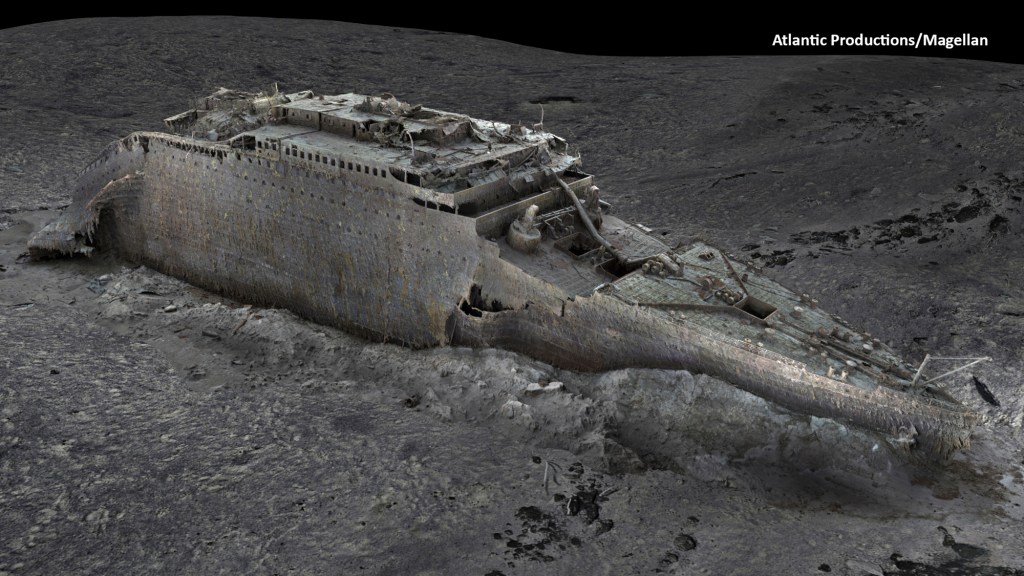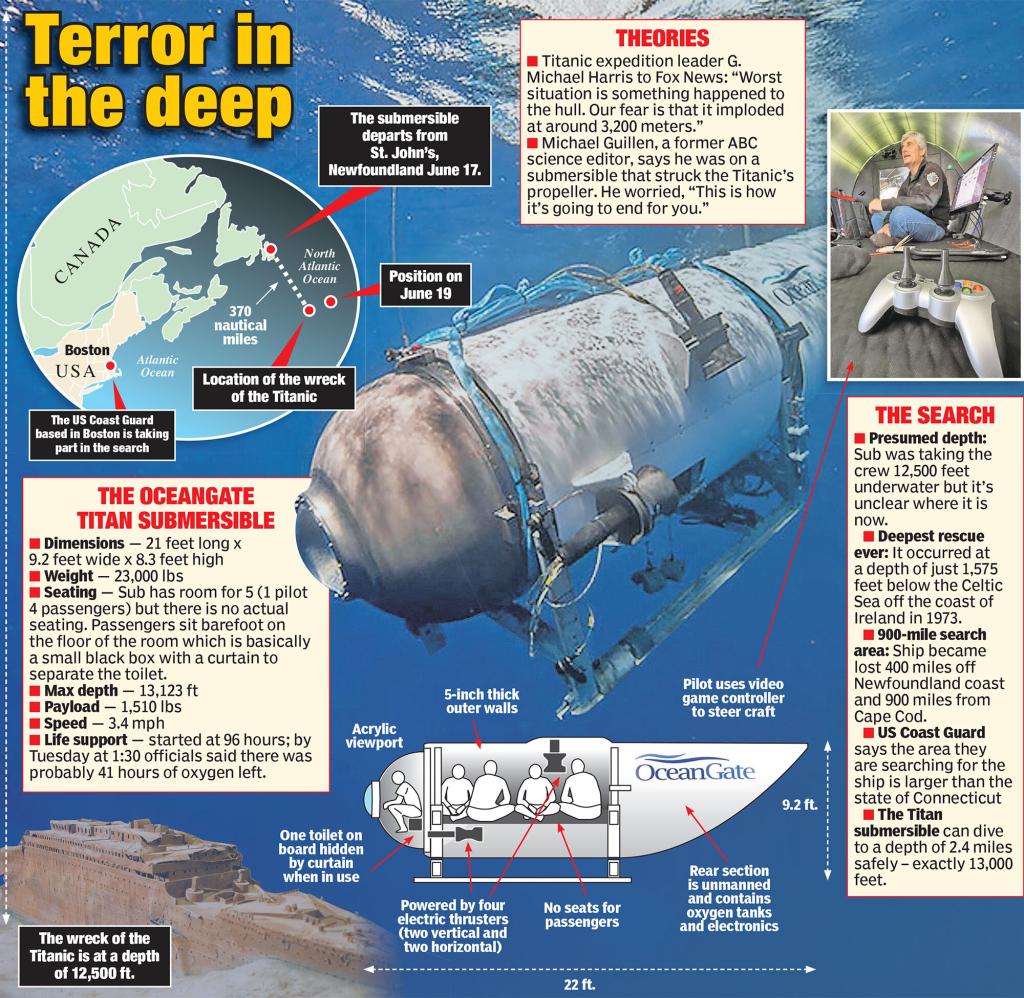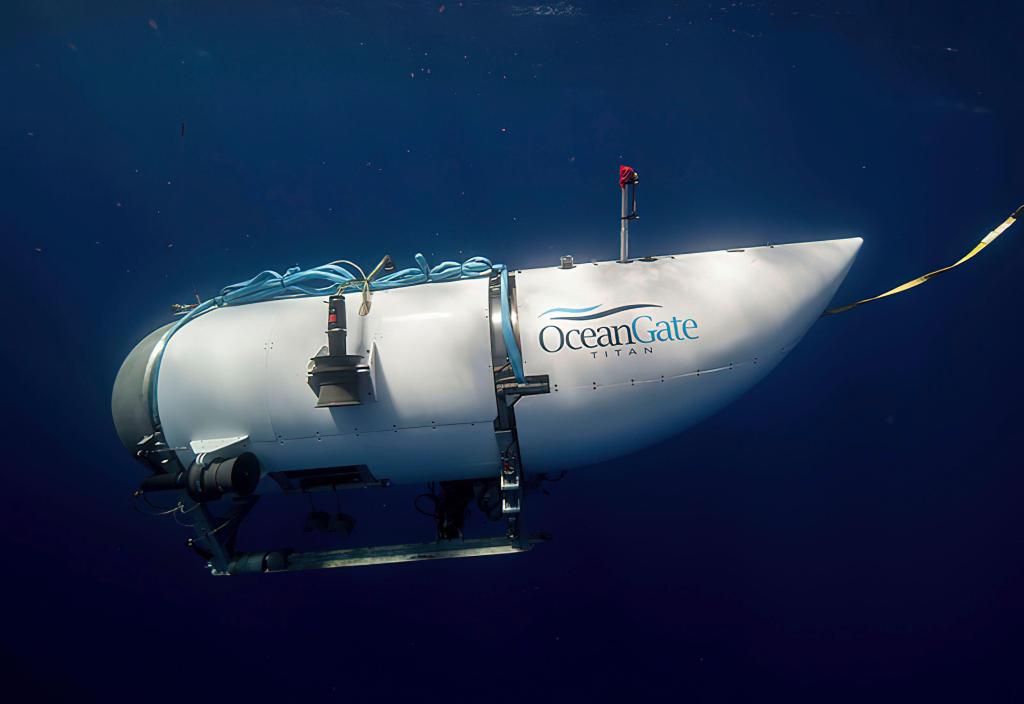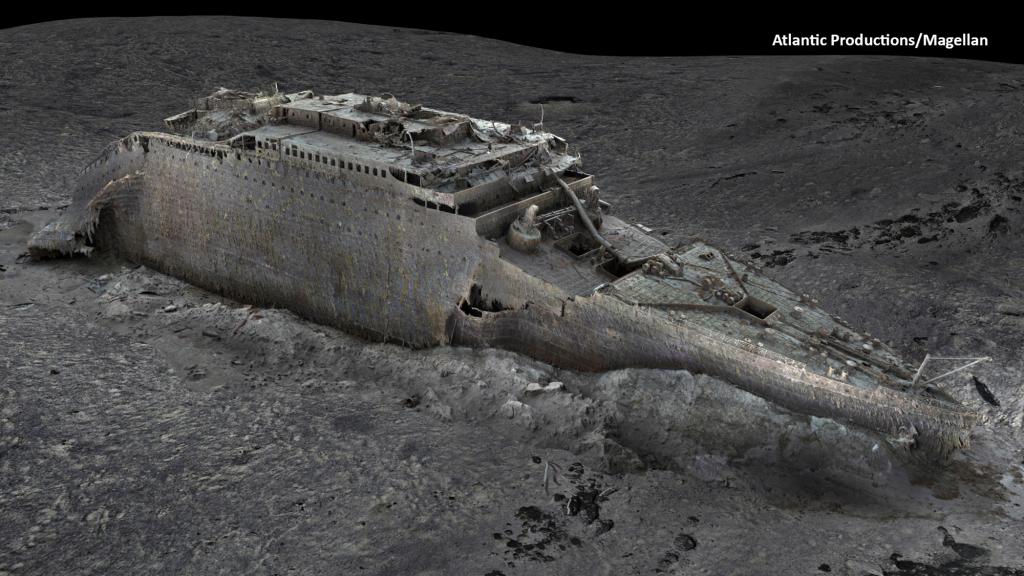Searchers detect ‘banging’ every 30 minutes near area where Titanic sub vanished as DHS emails confirm potential signs of life
Contact The Author
A Canadian airplane aiding in the search for the missing Titanic-bound submersible recently detected “banging” every 30 minutes in the area where the vessel lost radio contact with its surface ship.
Details of the potential signs of life aboard the OceanGate Expeditions submersible were included in internal emails sent to the Department of Homeland Security and separately confirmed early Wednesday by the US Coast Guard.
The emails, obtained by Rolling Stone, did not specify when the Canadian maritime surveillance and patrol aircraft picked up the banging.
But a Tuesday email obtained by the outlet from the Explorers Club, of which one of the passengers aboard the submersible is a member, noted the “tapping sounds” were detected around 2 a.m. local time, “implying crew may be alive and signaling.”
“RCC Halifax launched a P8, Poseidon, which has underwater detection capabilities from the air,” read the email updates sent to DHS.
“The P8 deployed sonobuoys, which reported a contact in a position close to the distress position. The P8 heard banging sounds in the area every 30 minutes. Four hours later additional sonar was deployed and banging was still heard.”
The US Coast Guard also revealed “underwater noises” were discovered by a Canadian P-3 aircraft in the search area, though it was unclear when.
Tourist submersible exploring Titanic wreckage disappears in Atlantic Ocean
What we know
A submersible on a pricey tourist expedition to the Titanic shipwreck in the Atlantic Ocean has vanished with likely only four days’ worth of oxygen. The US Coast Guard said the small submarine began its journey underwater with five passengers Sunday morning, and the Canadian research vessel that it was working with lost contact with the crew about an hour and 45 minutes into the dive.
It was later found that a top-secret team with the US Navy detected the implosion of the Titan submersible on Sunday, but did not stop search efforts due because the evidence was “not definitive” and a decision was made to “make every effort to save the lives on board.”
Who was on board?
The family of world explorer Hamish Harding confirmed on Facebook that he was among the five traveling in the missing submarine. Harding, a British businessman who previously paid for a space ride aboard the Blue Origin rocket last year, shared a photo of himself on Sunday signing a banner for OceanGate’s latest voyage to the shipwreck.
Also onboard were Pakistani energy and tech mogul Shanzada Dawood and his son Sulaiman, 19; famed French diver and Titanic expert Paul-Henri Nargeolet, and OceanGate founder and CEO Stockton Rush.
- Missing Titanic sub live updates
- Debris discovered near Titanic site during frantic search for missing crew on OceanGate sub
- Daughter of missing Titanic diver remains hopeful: ‘I think we have to trust’ search crews
- Titanic tourist Hamish Harding’s family slams OceanGate for delay in reporting missing sub
- Coast Guard knew Titan sub imploded Sunday, but continued search anyway — here’s why
What’s next?
“We’re doing everything we can do to locate the submersible and rescue those on board,” Rear Adm. John Mauger told reporters. “In terms of the hours, we understood that was 96 hours of emergency capability from the operator.
Coast Guard officials said they are currently focusing all their efforts on locating the sub first before deploying any vessel capable of reaching as far below as 12,500 feet where the Titanic wreck is located.
Mauger, first district commander and leader of the search-and-rescue mission, said the US was coordinating with Canada on the operation.
The debris recovered from the US Coast Guard’s Titan submersible search site early Thursday included “a landing frame and a rear cover from the submersible.”
After search efforts to recover the stranded passengers proved futile, and bits of debris from the submersible were found, it was decided that the sub imploded, which correlated with an anomaly picked up by the US Navy in the same area.
The Coast Guard later reported that all 5 passengers were confirmed dead, and rescue efforts were halted.
As a result of the development, a remotely operated underwater vehicle was rerouted to the vicinity where the sounds were heard, but so far the searches have come up empty, the Coast Guard said.
“The data from the P-3 aircraft has been shared with our U.S. Navy experts for further analysis which will be considered in future search plans,” the Coast Guard wrote in the brief update posted on Twitter.
The president of the Explorers Club, Richard Garriott, released a statement Tuesday night saying that the banging sounds have ignited a “much greater confidence” that the missing vessel will be found.
“There is cause for hope, based on data from the field — we understand that likely signs of life have been detected at the site,” Garriott said in a statement.
Neither the DHS nor the Coast Guard immediately responded to The Post’s request for comment.
Though rescuers are working to determine the location of the “banging” sounds, they are confident they originated from the same area of Newfoundland waters where the Titan and its five-person crew disappeared Sunday morning.
The submersible — carrying OceanGate Expeditions’ founder and CEO Stockton Rush, French Titanic expert Paul-Henri Nargeolet, British billionaire Hamish Harding and Pakistani businessman Shahzada Dawood and his 19-year-old son — lost contact with its support ship 1 hour and 45 minutes into its 8-hour trip.
Both Nargeolet and Harding are members of the Explorers Club.
The US Coast Guard said Tuesday afternoon that the crew likely only had 41 hours of breathable oxygen left.
If successful, the rescue mission would be considered the deepest ever.

























